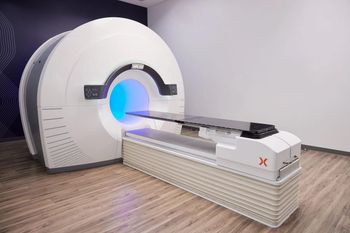
The ‘Celling’ of modern radiology
Usually, the beginnings of great change are recognized only in hindsight. The exception to that rule may have happened Aug. 24. This was the day the developers of Cell Broadband Engine Architecture -- known informally as Cell -- flung wide the doors to the technical underpinnings of this new computing chip.
Usually, the beginnings of great change are recognized only in hindsight. The exception to that rule may have happened Aug. 24. This was the day the developers of Cell Broadband Engine Architecture - known informally as Cell - flung wide the doors to the technical underpinnings of this new computing chip.
Cell is the brainchild of a joint venture among Sony, Toshiba, and IBM, whose engineers worked four years on its development at the STI Design Center in Austin, TX. The goal was to develop a chip with blazing computation speed that would overcome the problems of "memory latency," which have increasingly hamstrung computing technologies over the last two decades.
IBM architect H. Peter Hofstee describes this problem in
Cell promises to overcome this problem in computing by combining two highly specialized technologies in a single chip: a 64-bit processor called the Power Processor Element (PPE) that runs operating systems and applications, and eight independent processors called Synergistic Processor Elements (SPEs), which are optimized for running compute-intensive applications. Neither can do the other's function, but together they do both. According to the joint venture partners, they do them very well.
You might think that, having invested heavily in this technology, Sony, IBM, and Toshiba would want Cell all to themselves. Sony, in fact, plans to use the chip to power its PlayStation 3 product, due to be released next year. And Toshiba reportedly plans to use the chip to boost the performance of its high-definition TVs.
But the three companies also very much want to share Cell. They want to see it integrated into as many devices as possible. The obvious benefit to them would be the sale of tons of these chips. The only way they can do that is to encourage other companies to write software that runs on the chip.
A partnership between IBM and Mercury Computer is already going on in medical imaging and defense. The first results - workstation and interventional technologies - may be unveiled in just a few months at the RSNA meeting (DI SCAN 8/1/05). But these only hint at what might be possible.
Cell might feed a new generation of imaging devices, ones capable of performing complex processing on the fly that otherwise could only be done offline. Its arrival could not come at a better time.
The commercialization of 64-slice CTs, 3T MRs, and volumetric ultrasound scanners has mandated the development of workstations capable of keeping up with the flood of data streaming from these systems. Superpremium workstations are needed to unlock the enormous potential of these modalities in cardiac and brain imaging, as vendors now must focus on achieving clinical results rather than technical specifications for their scanners.
Newsletter
Stay at the forefront of radiology with the Diagnostic Imaging newsletter, delivering the latest news, clinical insights, and imaging advancements for today’s radiologists.




























